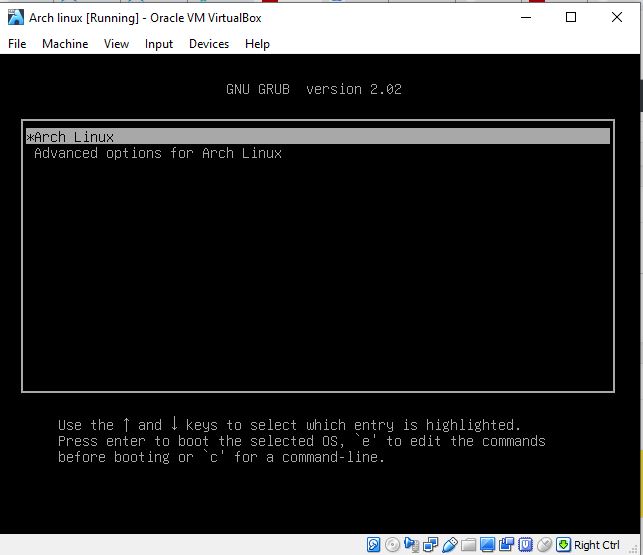
- Install virtualbox arch linux install#
- Install virtualbox arch linux drivers#
- Install virtualbox arch linux update#
- Install virtualbox arch linux driver#
- Install virtualbox arch linux windows 7#
Install virtualbox arch linux install#
In this tutorial, I have shown you how easily you can install guest additions in Fedora and other related distros.

Install virtualbox arch linux drivers#
Oracle’s VirtualBox provides a set of device drivers and apps which helps to achieve data and other communication between guest and host system. And the host system is where you install the VirtualBox application. When you install Linux on a virtual machine, it is often designated by the guest system. It may break some day down the line, but I will not hesitate to spend a couple of hours to install it back and get things back on track.The most simple way to install VirtualBox Guest additions in Fedora and related distros. I trust it so much that I have it installed on my main workstation. My Arch Linux experience has been extraordinary. The result of the query is: virtualbox 5.1.6-1 virtualbox-guest-iso 5.1.6-1 virtualbox-host-dkms 5.1.6-1 Let me query my packages and show you: sudo pacman -Q | grep virtualbox


On Arch Linux you need to install VirtualBox dkms package. dkms has been extremely reliable all these months.
Install virtualbox arch linux driver#
Since the message said that it was the loading of vboxdrv that had failed, I thought of loading the driver myself and it worked: sudo modeprobe vboxdrvĭkms is supposed to do the dirty work of updating modules for me. The result was: rcvboxdrv vboxballoonctrl vboxheadless vboxmanage vboxreload vboxsdl vboxwebsrv I did the following in /sbin directory: ls | grep vbox This is what I got in return: sudo: /sbin/vboxconfig: command not found I did what the message asked me to do: sudo /sbin/vboxconfig Where: suplibOsInit what: 3 VERR_VM_DRIVER_NOT_INSTALLED (-1908) – The Please reinstall the kernel module by executing The VirtualBox Linux kernel driver (vboxdrv) is either not loaded or there is a permission problem with /dev/vboxdrv.
Install virtualbox arch linux update#
The update had nuked VirtualBox and it cried:
Install virtualbox arch linux windows 7#
Started VirtualBox after the update and tried to launch my Windows 7 virtual machine. This is something Corporates with unending supply of money and resources aim to achieve. This breakage notwithstanding, I think, this level of stability for a rolling-release is just unbelievable. Yesterday’s update, however, broke VirtualBox. I had never faced an update issue in the past almost one year. I installed it because I was bored with Xfce. I had the same experience with it on Arch Linux too. However, stability tumbled away and I was left with an OS that froze every now and then. Prior to that I had allowed openSUSE Tumbleweed to rule my workstation.

Tune2fs allows the system administrator to adjust various tunable filesystem parameters on Linux ext2, ext3, or ext4 filesystems. The result: Filesystem created: Wed Nov 4 03:10:39 2015 How, then, do I know when I installed Arch Linux? sudo tune2fs -l /dev/sda2 | grep 'Filesystem created:' Now, Linux does not tell us the installation time the way Windows does with the systeminfo command: I got my trusted lieutenant, Xfce, installed immediately. I had installed Arch Linux UEFI on my main workstation on 04 November 2015 at ~03:10 hrs.


 0 kommentar(er)
0 kommentar(er)
